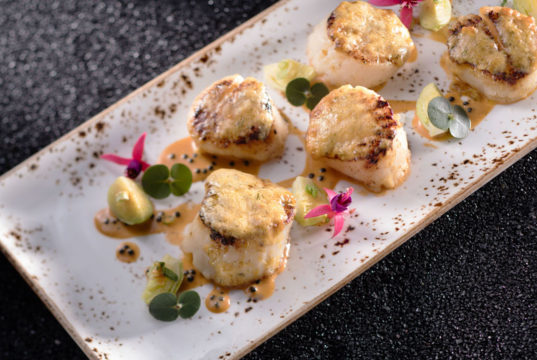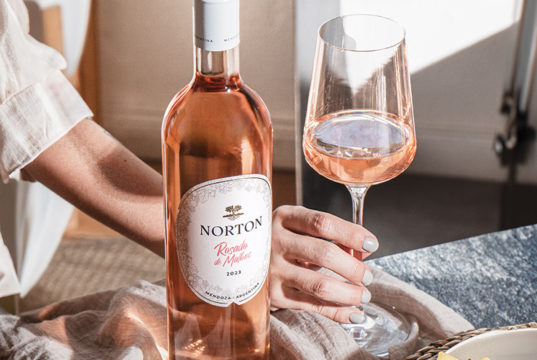The Art of Eating
Paris and Île-de-France
La grande cuisine was invented in the fertile grounds of Île-de-France surrounding Paris, where classic French cooking became high art in the hands of competitive culinary talents. Although lacking identity, the central region is a gastronomic mecca, attracting a wealth of excellent markets, delis, bistros and restaurants, including many listed in the Michelin Guide.
Champagne, Lorraine and Alsace
 Champagne is world-renowned for its exquisite eponymous sparkling wine. The region also produces superior game and ham. Alsatian cuisine has a strong Germanic flavour. Think cured pork, sausages and cabbage. Try the quiche Lorraine, potée, bouchée à la reine, tourte à la Lorraine and petite madeleine. In Alsace, go for the choucroute garnie, the pungent Munster cheese, coq au Riesling, baeckeoffe, flammekueche, oie à l’alsacienne, its Kronemburg beer and sweet treats like gingerbread, bredele and tarte à l’alsacienne.
Champagne is world-renowned for its exquisite eponymous sparkling wine. The region also produces superior game and ham. Alsatian cuisine has a strong Germanic flavour. Think cured pork, sausages and cabbage. Try the quiche Lorraine, potée, bouchée à la reine, tourte à la Lorraine and petite madeleine. In Alsace, go for the choucroute garnie, the pungent Munster cheese, coq au Riesling, baeckeoffe, flammekueche, oie à l’alsacienne, its Kronemburg beer and sweet treats like gingerbread, bredele and tarte à l’alsacienne.
Nord-Pas-de-Calais and Picardy
The Ardennes forests of northern France provide game, such as venison and wild boar. Often overlooked, the region harbours hearty local fare worth sampling. Flemish influences are evident in regional dishes, like carbonnade, hochepot, caudière and veau flamande. In Picardy, seek the agneau de pré-salé—lamb that feeds on the flora and iodized salt marshes of the Somme Estuary, rendering its flesh a very fine grain with a distinct, highly prized flavour.
Normandy
Normandy’s lush, fertile lands are home to apples and some of the best dairy produce in France. Norman cream, milk and butter are important ingredients often used in the country’s best dishes and the region’s fine cheeses, such as Camembert, Pont-l’Evêque and Livarot. The apples mostly go into cider, Calvados (a fiery brandy), or infused into traditional dishes as creamy sauces, such as filet mignon de porc normande. Seafood is a staple: fish, oysters, scallops are regular features on the menu. Try the moules à la normande and sole normande. Meats are of superior quality, especially from the sheep and lamb pastured in the salt marshes along the coastline.
Brittany
 Similar to Normandy, Brittany is home to an abundance of high quality seafood, especially the Belon oysters in Cancale, crabs in St Malo and lobsters in Camaret. Buckwheat and cereals grow in abundance in Brittany, along with some of the best produce in the country: sugar beets, chicory, cauliflower, leeks and artichokes. Brittany is famous for its crêpes and buckwheat gallettes, with crêperies offering creative savoury and sweet pancakes. Breton cooking is kept simple with little sauce, highlighting its fish and seafood. Look for hearty cotriade, palourdes farcies and pot au feu d’homard.
Similar to Normandy, Brittany is home to an abundance of high quality seafood, especially the Belon oysters in Cancale, crabs in St Malo and lobsters in Camaret. Buckwheat and cereals grow in abundance in Brittany, along with some of the best produce in the country: sugar beets, chicory, cauliflower, leeks and artichokes. Brittany is famous for its crêpes and buckwheat gallettes, with crêperies offering creative savoury and sweet pancakes. Breton cooking is kept simple with little sauce, highlighting its fish and seafood. Look for hearty cotriade, palourdes farcies and pot au feu d’homard.
Loire Valley and Central France
Dubbed “the garden of France”, Anjou and Touraine in the Loire Valley are perfect for growing high quality table grapes and fruits such as cherries (for the liqueuer Guignolet), the Belle Angevine pears, strawberries and melons aptly used in fruit tarts. The region’s most famous goat’s cheeses include Selles-sur-Cher (dusted with ash) and Crottin de Chavignol. Freshwater fish from the rivers, such as pike, shad, salmon and eels, are widely served with beurre blanc (whipped butter with vinegar or white wine and shallots) or a simple sorrel sauce. Wild game from the Sologne forests is used in the region’s superior charcuterie. Try the rillettes, andouillettes and the famous upside-down apple tart, tarte tatin.
Burgundy and Franche-Comté
Burgundy is rightly known worldwide for its aristocratic white wines and fine red burgundy, which also dominate the delicate Burgundian cuisine, featuring the region’s best produce, game and meats. Sync your trip with the annual gastronomic fair in Dijon, Burgundy’s principal city and the mustard capital of France, and meet gourmets from all over the country. Sample the regions’ most distinguished cheeses: Chaource, Epoisses, Comté, Morbier and Mont d’Or. Go for a Dijon mustard tasting. Try the delicate poulet de Bresse and savour the bœuf à la bourguignonne (the king of beef stews) paired with the best burgundy wines for a truly gastronomic experience. Other delectable dishes from these regions include coq au vin, marcassin farci au saucisson, escargots à la bourguignonne, en meurette and a special dessert, gâteau de ménage. The regions also produce Crème de Cassis, the popular blackcurrant liquor.
Rhône-Alpes and Savoy
 The cuisine of the Rhône-Alpes, Jura and Savoy regions features fruits and young vegetables, superior sausages, fresh lake fish, game, delicate poultry and wines from Beaujolais and the Rhône Valley. The Alpine regions are famous for their specialty cheeses—Beaufort, Abondance, Reblochon, Tomme and Vacherin—widely used in the local dishes. The Chartreuse liquor is produced in the mountains of Chartreuse. The region houses celebrated chefs including Fernand Point, Paul Bocus, the Troisgros brothers and Alain Chapel. Lyon is dubbed the “world capital of gastronomy” for the highest concentrations of restaurants per capita in France. Local specialities include fondue Savoyarde, raclette, tourte au Reblochon, gratin dauphinois, brochette jurassienne, escalope de veau belle comtoise and brési.
The cuisine of the Rhône-Alpes, Jura and Savoy regions features fruits and young vegetables, superior sausages, fresh lake fish, game, delicate poultry and wines from Beaujolais and the Rhône Valley. The Alpine regions are famous for their specialty cheeses—Beaufort, Abondance, Reblochon, Tomme and Vacherin—widely used in the local dishes. The Chartreuse liquor is produced in the mountains of Chartreuse. The region houses celebrated chefs including Fernand Point, Paul Bocus, the Troisgros brothers and Alain Chapel. Lyon is dubbed the “world capital of gastronomy” for the highest concentrations of restaurants per capita in France. Local specialities include fondue Savoyarde, raclette, tourte au Reblochon, gratin dauphinois, brochette jurassienne, escalope de veau belle comtoise and brési.
Poitou-Charentes, Limousin and Auvergne
The regions of Poitou-Charentes, Limousin and Auvergne are home to cognac, oysters, mussels, goat’s cheeses, high quality cattle, sheep, game and mushrooms. The best butter and cream in France are found in Poitou and Charente. In Aveyron, the pungent Roquefort is made out of unpasteurized ewe’s milk. Cabécou cheese can be found in Rocamadour, a medieval villa perched on a cliff in Causses du Quercy. Auvergne has simpler, heartier dishes featuring a combination of pork, cabbage, potatoes and cheese. Some of the best regional dishes are potée auvergnate, truffade, aligot and tripoux.
Aquitaine and French Basque Country
 Bordeaux is renowned for its specialty grapes and wines. The cuisine of these rural regions is heavy but surprisingly sophisticated, often cooked in goose fat for a unique taste. Two commonly used ingredients in à la périgourdine dishes are foie gras (fattened goose or duck liver) and truffles (in soups, sauces, pâtés, stuffing and with meats). The regions also produce top quality lamb, such as the agneau de Pauillac, superior sheep cheeses, high quality free-range chicken, pigeon, goose, duck turkey, beef, prunes and Armagnac. Dishes from Gascony and Périgord feature excellent patés, terrines, confits and magrets. The cusine of the Basque country, featuring mostly fish and meats, is prepared à la basquaise with a spicy, flavourful sauce of garlic, onions, herbs, tomatoes and peppers. Taste regional offerings such as ballotine de lièvre à la périgourdine and cassoulet périgourdin. The regional dishes of the Basque country include bayonne (salt-cured, thinly sliced ham eaten raw or cooked in stews), pipérade, chipirones and a dessert gâteau basque.
Bordeaux is renowned for its specialty grapes and wines. The cuisine of these rural regions is heavy but surprisingly sophisticated, often cooked in goose fat for a unique taste. Two commonly used ingredients in à la périgourdine dishes are foie gras (fattened goose or duck liver) and truffles (in soups, sauces, pâtés, stuffing and with meats). The regions also produce top quality lamb, such as the agneau de Pauillac, superior sheep cheeses, high quality free-range chicken, pigeon, goose, duck turkey, beef, prunes and Armagnac. Dishes from Gascony and Périgord feature excellent patés, terrines, confits and magrets. The cusine of the Basque country, featuring mostly fish and meats, is prepared à la basquaise with a spicy, flavourful sauce of garlic, onions, herbs, tomatoes and peppers. Taste regional offerings such as ballotine de lièvre à la périgourdine and cassoulet périgourdin. The regional dishes of the Basque country include bayonne (salt-cured, thinly sliced ham eaten raw or cooked in stews), pipérade, chipirones and a dessert gâteau basque.
Languedoc-Roussillon and Midi-Pyrénées
The cuisine of southwest France is widely varied like the climate, with traces of Roman influence in Languedoc and a hint of Mediterranean. The area offers high quality jambon cru (hams), truffles, saucisse de Toulouse (the finest sausage in France), foie gras, “black wine” (in Cahors), haricot beans, oysters and mussels. Dishes are prepared à la languedocienne in the south and east—with olive oil, tomatoes, mushrooms, garlic and aubergines, while in the north and west, it is ruled by pork, wild mushrooms, dried beans, lentils and chestnuts. To the west, Spanish and Catalan influences can be seen in omelettes with green peppers, tomatoes and ham. A must-try dish is the classic Roman-Languedocien cassoulet, a rich garlicky stew of goose or duck, pork or mutton and haricot beans. Other regional specialities are cousinat (chestnut and cream soup), cargolade (Catalan style snails), brandade, sète, bourride, tielles and rouille de seiche.
Provence-Alpes-Côte d’Azur
 The Provence and Côte d’Azur region is one of the largest suppliers of quality citrus, vegetables, olive oil, fruits and herbs in France. Dishes feature a lot of seafood and vegetables prepared Mediterranean style—à la provençale with herbs, garlic, olive oil, onions, artichokes, tomatoes, aubergines and hot peppers, or à la niçoise with olive, capers, anchovies and tarragon. Lavender is commonly used in many dishes, while truffles are widely available in winter. Regional specialities include traditional peasant soups and stews, such as estouffade, daube, Marseille’s famous seafood bouillabaisse, soupe aux poissons; Italian-inspired pastas (especially ravioli, cannelloni, gnocchi and pistou); ratatouille; and pieds et paquets. The provençale holiday drink of choice is Pastis, an anise-flavoured spirit.
The Provence and Côte d’Azur region is one of the largest suppliers of quality citrus, vegetables, olive oil, fruits and herbs in France. Dishes feature a lot of seafood and vegetables prepared Mediterranean style—à la provençale with herbs, garlic, olive oil, onions, artichokes, tomatoes, aubergines and hot peppers, or à la niçoise with olive, capers, anchovies and tarragon. Lavender is commonly used in many dishes, while truffles are widely available in winter. Regional specialities include traditional peasant soups and stews, such as estouffade, daube, Marseille’s famous seafood bouillabaisse, soupe aux poissons; Italian-inspired pastas (especially ravioli, cannelloni, gnocchi and pistou); ratatouille; and pieds et paquets. The provençale holiday drink of choice is Pastis, an anise-flavoured spirit.
Corsica
The sunshine island of Corsica is a gourmand’s paradise with its abundant supply of wild boar, pigs, goats, sheep, seafood, fish, cheeses, wines, vegetables and fruits. Brocciu (ewe’s cheese) is the most popular cheese. Chestnuts are used to produce flour to make bread, cakes and polenta. Corsica also produces quality wines and fruit liqueuers. Rosemary, lavender, fennel and thyme are mixed with tomatoes, olives and lemons to season the mountain-reared mutton, pork and beef. Meat dishes are often served with pasta or polenta. Look out for Corsica’s signature dish, civet de sanglier (wild boar casserole), veau aux olives and agneu corse.





























































